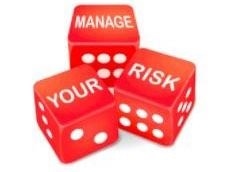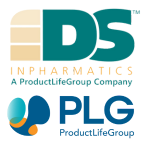CMC consultants can help educate investigational new drug application (IND) sponsors (also known as clients), helping them to address any major concerns around risk, and prompting them to reconsider their approach where necessary.

Image Credit: DS InPharmatics
Assessing a client’s risk tolerance involves the use of numerous tools. Consultants will often formulate reviews, envisage worst case scenarios and provide historical information based on their own experiences.
By working through these exercises, a consultant can attain a solid understanding of a client’s willingness to take risks in their development program. However, in some cases, the client may have an unrealistic idea of what constitutes an acceptable level of risk.
Some individuals simply do not possess a realistic sense of risk. They could be overly cautious, refusing to make even the most sensible bets on their development program, or, they may take severe or unnecessary risks, putting too much faith in unpredictable, improbable CMC strategies without taking proper advice.
Working with clients whose risk tolerance is excessive in either direction requires consultants to adjust the way in which the client works towards key goals and milestones.
Clients changing their approach and accepting an appropriate level of risk in line with their objectives is a key factor in their ultimate success. For example, effective marketing approval, peace of mind, noted achievements and increased shareholder value.
Often, clients are keen to take too little or too much risk, because they lack experience of development activities and the common levels of risk involved. For example, they may be looking for a rapid, smooth approval process, without being prepared to invest sufficient finances into this.
A consultant will often respond by explaining the risk-return relationship, outlining key regulatory drug development concepts at each phase.
Overall, clients often lack a solid grounding in risk assessment concepts. Clients may claim to be comfortable with unpredictability while keeping focussed on their long-term objectives, only to then panic following a minor setback to the program; for example a failed batch.
Clients may also choose the most conservative path, only to find that later on, their program is costly while still being behind schedule.
Questions, not lectures
Instead of lecturing clients on why their approach to risk is not ideal, consultants should employ a more interactive, dialogical strategy. Through appropriate questioning, consultants should try to uncover the client’s perspective on their development program.
In order to instigate this conversation, clients’ receptivity to risk will be discussed, then followed up with questions around what led them to that particular strategy, or the thought process that led to their decision.
This opens up a dialogue allowing the consultant to fully understand the client’s perspective. For example, the client may have been involved with a failed product as a result of CMC issues, making them hesitant to take further risks. Once this has been established, education can begin.
Prompting clients to rethink their risk tolerance necessitates a delicate approach. Clients may become defensive if they are overtly criticized, for example, should a consultant tell them to change their whole perspective or point out that their approach is too extreme.
The best approach is to guide clients towards reaching their own conclusions, prompting them to rethink their acceptable risk levels. Clients should be encouraged to seek out resources on their own, for example, finding three different regulatory drug development strategies and then exploring the positives and negatives of each. This allows a more informed conversation to take place.
It is also valuable to explore a client’s risk tolerance in novel ways, for example, asking clients whether or not they would cut back on drug development, if the company was facing a shortage of cash or resources.
Another useful tactic is to ask clients to estimate how much they will gain by generating data and dialogue with partners, such as CMO’s and regulatory agencies, over such a sensitive, timely period, as well as asking how confident they feel about this process.
Overall, maintaining client engagement via active discussion around risk will deter consultants from taking a more directive, possibly confrontational approach with their clients. The more that clients can actively participate in the decision-making process, the more they will be on board with the consultant’s recommendations.
Appeal to logic
Should a consultant be working with a client that refuses to accept even a relatively small amount of risk, it is important to look at existing goals, reflecting on these when prompting clients to take on more risk, as required.
If clients are still not on board, project planning tools such as Gantt charts can be used to project how the client may fall short of their goal, should the risk not be taken. Often a frank conversation needs to take place around whether or not the client – an IND Sponsor – is happy to accept a certain level of risk to meet their product approval goals, or whether it would be better for them to reduce these goals.
Most people are logical if outcomes are presented in a logical manner, and in almost every case, clients will accept an amount of additional risk in their long-term planning.
Where clients are intent on risking too much, a consultant will normally work with them to understand the consequences of a failed decision. In many cases, one member of an IND sponsor partner will be more intent on taking on more risk than the other.
If a client is aggressive but not necessarily irrational, a consultant may point out that if the process aims for too many quick wins without proper planning, there is an increased chance of bigger setbacks, later. This discussion will often use case studies to provide real world examples of situations where this has occurred.
The overall goal of this article has been to explore the way in which a CMC consultancy business will operate, offering a series of best practice approaches and procedures aimed at transparent, timely and effective communication between IND sponsors, FDA and key agencies at vital points in the drug development process.
These approaches may enable faster approval and earlier availability of effective, safe drugs to the public.
This guidance applies to communications between FDA and IND sponsors during the IND phase of drug development, and also includes biological product development. Other points that may be worthy of further exploration include:
- FDA’s philosophy around timely and interactive communication with IND sponsors as a central activity
- The range of appropriate interactions between IND sponsors and review teams
- The forms of CMC advice which are appropriate for IND sponsors to seek from FDA in the pursuit of their drug development programs
- General expectations around the timing of FDA responses to IND sponsor CMC inquiries
Marketing, licensing, or divesting?
The primary goal in this process is to avoid wasting time on compounds that may need to be scrapped later as a result of CMC related issues. Generating a CMC scorecard beforehand can identify problems early, allowing enough time for appropriate solutions.
Using this approach, it is possible to identify, assess and rank unforeseen risks via the use of a quantitative approach which will ensure that compounds develop into approved products.
DSI can instruct clients on the use of a quantitative-based scoreboard approach that will allow them to identify drug program risks, while providing you a means of evaluating important areas in the drug development process.
DSI can also provide technical, regulatory, and project management consulting services to healthcare product companies that both manufacture and market biopharmaceuticals, pharmaceuticals, and gene or cellular therapy products.
Since 2007, DSI has provided its clients with pioneering strategies and excellent quality work products aimed at enhancing product development, approval, and marketing presence.
Whether advocating a CMC strategy, managing CMC operations or developing CMC submission content that represents the best interests of emerging biotech clients, DSI can focus on critical CMC issues to create programs which improve development processes.
Acknowledgments
Produced from content originally authored by Edward A. Narke from Design Space Inpharmatics.
About DS InPharmatics 
DS InPharmatics (DSI) provides regulatory, technical, and project management consulting services to healthcare product companies that manufacture and/or market pharmaceuticals, biopharmaceuticals, and cellular and gene therapy products.
Since 2007 we have provided our clients with innovative strategies and exceptional quality work products intended to enhance product development, approval, and marketing presence. Whether advocating CMC strategy, directing CMC operations or developing CMC submission content that represent the best interests of emerging biotech, we focus on the critical CMC issues and build programs that enhance development.
In April 2021 we were thrilled to announce that DSI has just become part of ProductLife Group.
French-headquartered ProductLife Group (PLG) is well-known in the Life Sciences market. It has a track record of successfully managing global outsourcing programs and insourcing services for its international client base. The company is on a mission to help transform human health outcomes by optimizing regulatory affairs, safety & vigilance, and quality compliance for life sciences organizations worldwide.
The fit between our two organizations could not be more perfect. We will complement PLG's growing biotech services portfolio. US biotech sponsors recognize DSI as a leader in consulting for go-to-market strategies and RA pre-market consulting. At the same time, PLG has a strong reputation for managing end-to-end outsourcing of regulatory affairs and pharmacovigilance activities worldwide.
Our merger with PLG will harness our combined strengths, offering our clients on both sides of the Atlantic support with their developed drugs approvals and post-approvals compliance, plus advisory services on the best market strategies to deliver a rapid ROI on their development. Together we will offer our clients increased pharmacovigilance capabilities - including a QPPV; pharmacovigilance consulting; and a fully validated safety database - as well as complementary toxicology-related services; RIM/electronic document management services; and support for medical device regulatory requirements.
We see enormous potential in this new chapter for DSI and you, our clients. As a PLG company, we have the opportunity to become part of a global force in life sciences regulatory and compliance solutions and services, and we're incredibly excited to add our momentum to that effort.
Sponsored Content Policy: News-Medical.net publishes articles and related content that may be derived from sources where we have existing commercial relationships, provided such content adds value to the core editorial ethos of News-Medical.Net which is to educate and inform site visitors interested in medical research, science, medical devices and treatments.